Conservation Corner: Edward Moran’s A View of Boston Harbor
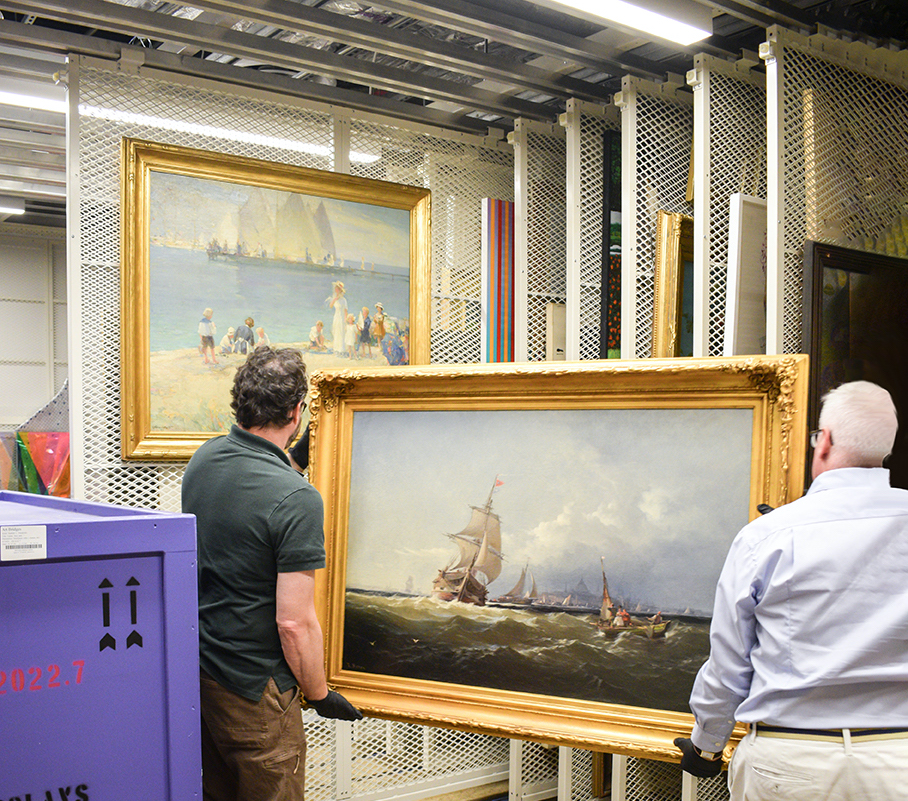
Walk through the galleries and you’ll find many treasures from the Museum’s Permanent Collection: paintings, drawings, prints, sculptures, and decorative arts. With so much to see, you might be surprised to learn that approximately just 9.75% of the collection is on view at a time.
The majority of the Museum’s permanent collection rests comfortably in two secure fine art storage areas called vaults. If you could peek inside the vaults, you’d see bronze sculptures standing on enameled shelving; fragile textiles rolled around acid-reduced tubes and placed on rolling screens; and paintings hung on racks. Works on paper, some of the most fragile pieces in the collection, are carefully stored to reduce the cumulative effects of light damage.
Whether a generous gift to the Museum or a Museum purchase, these objects require ongoing care to help ensure their future. The temperature and relative humidity inside the vaults are closely monitored to match those in the galleries. These conditions are difficult and expensive to maintain, but they’re necessary to ensure the health and long-term safety of the collection.
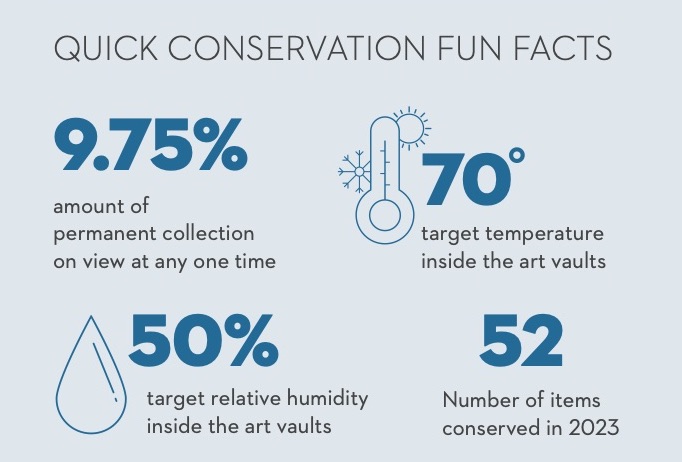
Besides careful storage, some artworks need special attention to conserve them. A piece may need conservation work for a variety of reasons, from the way it was created, to its life before it entered our collection, or simply due to age. When such problems exist, we consult the expertise of a conservator. “I admire the small group of conservators I work with for their rare combination of talents as scientists, artists, and historians,” says Doug Evans, Director of Collections and Exhibition Management.
One of the most recent and dramatic conservation projects is Edward Moran’s A View of Boston Harbor, which was made possible through a new conservation fund named in honor of Curator Emerita Barbara Jones and contributed to by generous donors.
Edward Moran (1829–1901) grew up in Lancashire, England, in a family of weavers. As a teenager, he and his family emigrated to Philadelphia, Pennsylvania, where he studied with the artist James Hamilton. Moran is known for his marine paintings, such as A View of Boston Harbor. A large schooner near the center of the painting dominates the scene. To the right of the schooner, a small dinghy holds four passengers. Boats of various sizes list upon the choppy green and white-capped water of Boston Harbor beneath a muted blue and white sky, with the city barely visible in the background.
The painting had been wax lined and cut down by a previous owner. Over the years, this resulted in a dull, uneven appearance. Previous attempts at in-painting no longer matched in many places, and broad, grayish brushstrokes obscured the lower quarter of the painting. These visible marks were the result of wax extruding through the paint and moving to its surface. Additionally, several layers of synthetic resin varnish covered the surface.
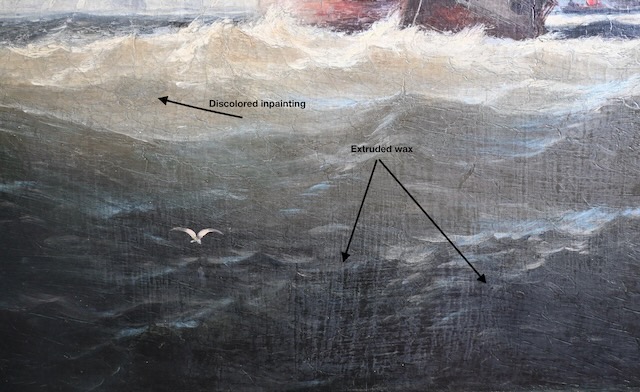
Paintings conservator Christine Daulton easily removed the extruded wax, but the synthetic varnish and old in-painting came with it, revealing massive areas of abrasion over the entire painting. New in-painting was the greatest challenge in this treatment because the abrasions revealed so many different layers of paint. Those layers created the final look that Edward Moran wanted, so the conservator had to work with the layers while also matching the paint. In all, about twenty hours of Daulton’s time and expertise were required to return A View of Boston Harbor to life.
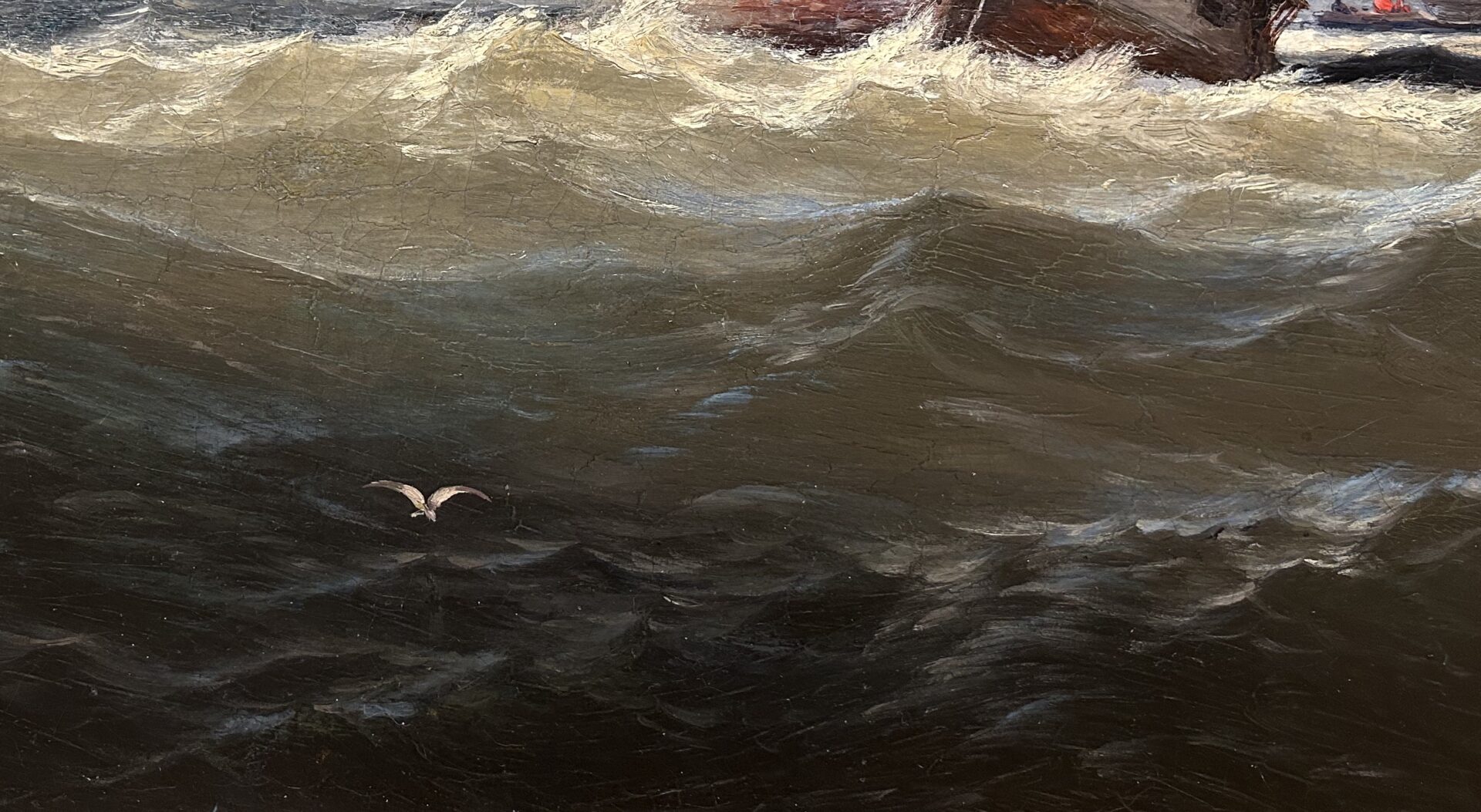
The frame on the painting was structurally sound, but the surface was abraded and chipped. The frame’s rabbet (the inner lip that holds the painting in place) was split in at least two places. The gesso was cracked along the corner seams with side splits in both upper corners. Sadly, the frame had been over-painted with bronze paint that had tarnished badly which, hid further damage below. The frame’s appearance was degraded, dark and dusty, giving a warm green/brown hue in place of the expected gold. Small slivers of bright gilding were discovered along edges where the bronze paint did not fully obscure the surface and hinted at what the finish should be.
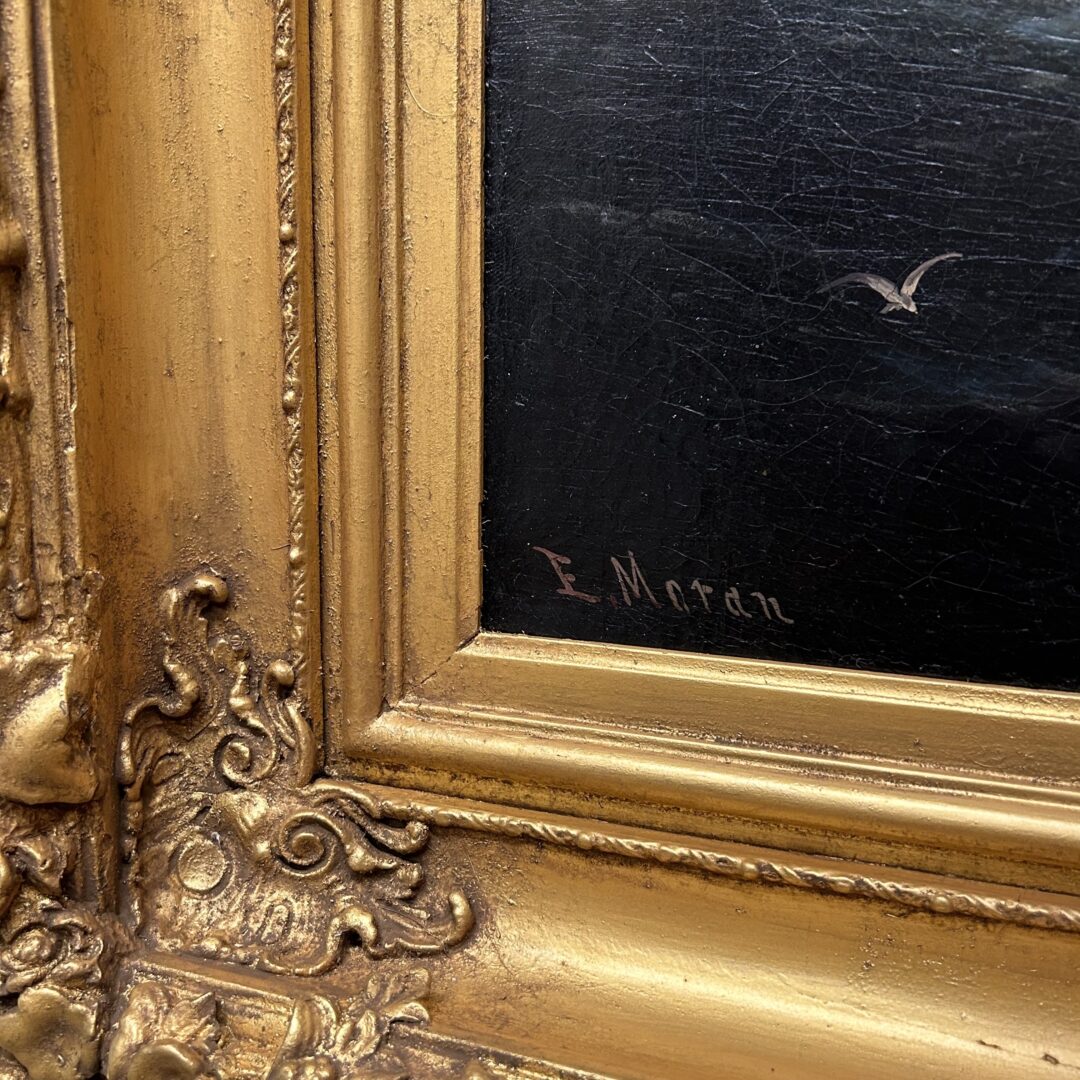
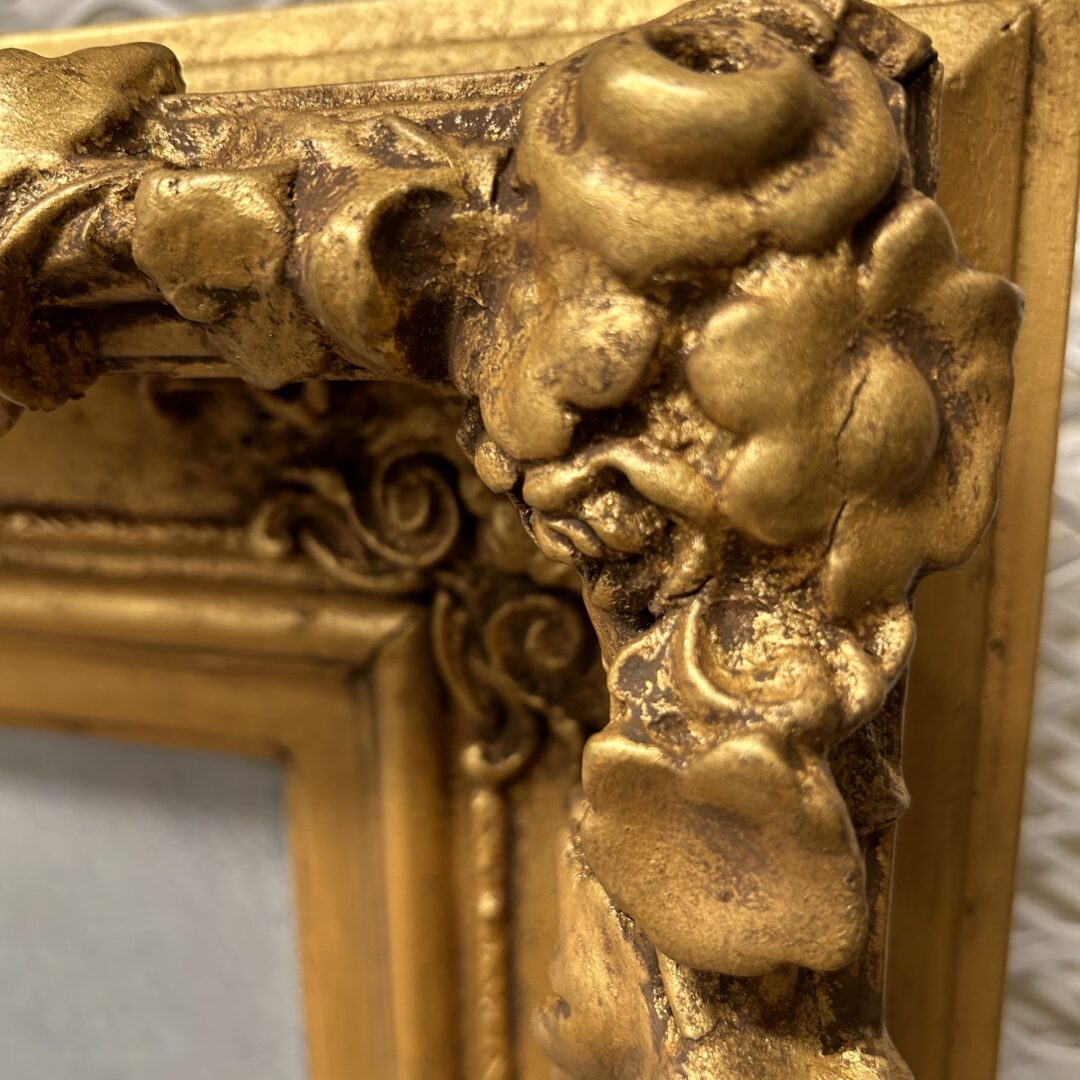
Details of the restored frame after object conservator Michael Belman restored it
Michael Belman, an object conservator from Fine Art Conservation Services LLC, cleaned the frame with solvents and water-based cleaners to remove the bronze overpaint. He molded lost, decorative details from existing ornaments on the frame filled in losses in the frame with gesso. Sealed with diluted varnish, the entire surface received a layer of gold leaf that was both burnished and patinated to give the frame a healthy appearance for its age. This frame required fifty-five hours of the conservator’s attention and talent.
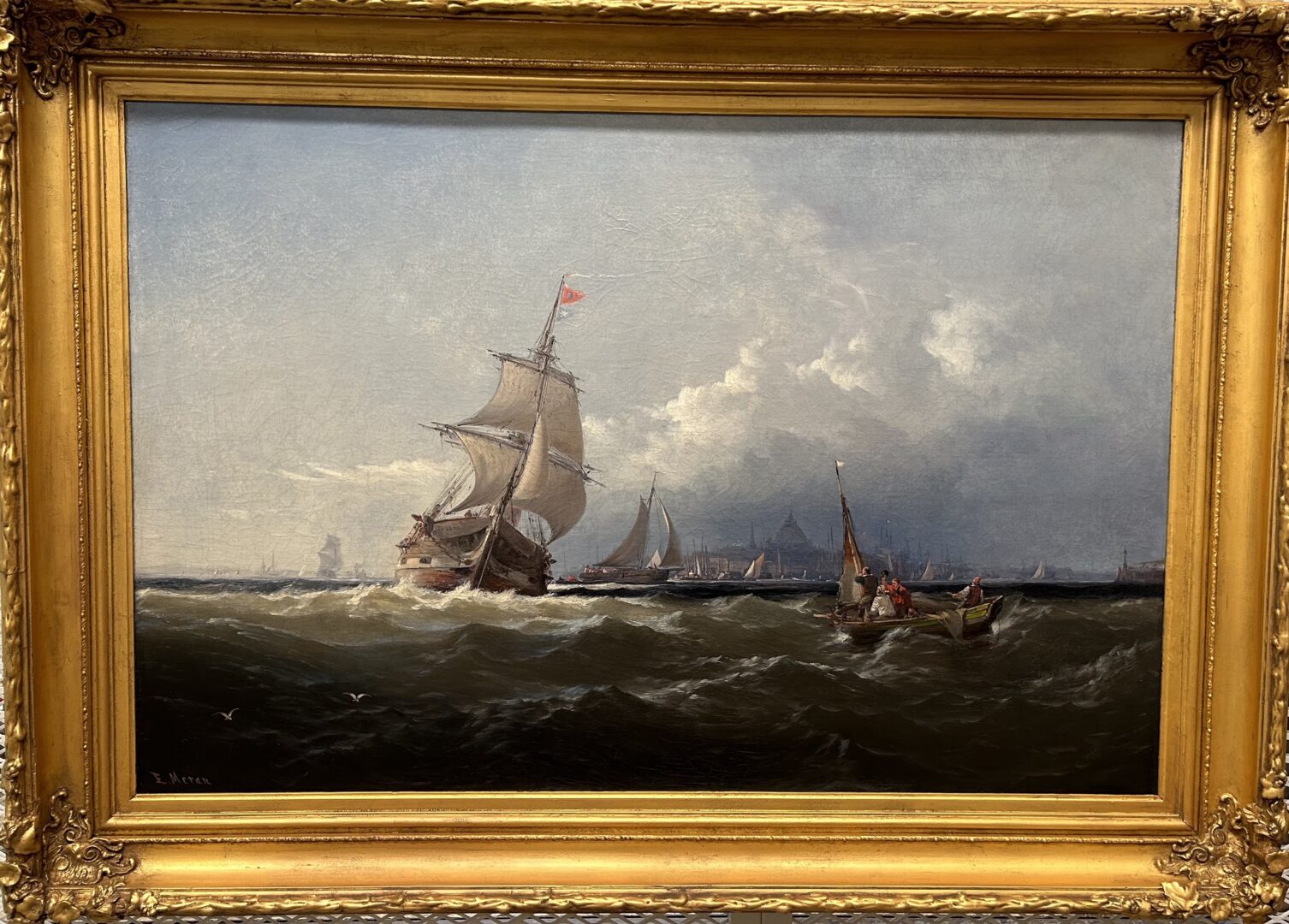
Now back home at The Westmoreland, the newly conserved A View of Boston Harbor is safe and sound in the Museum’s vault. It will be on view again in the near future. We look forward to sharing it with you.